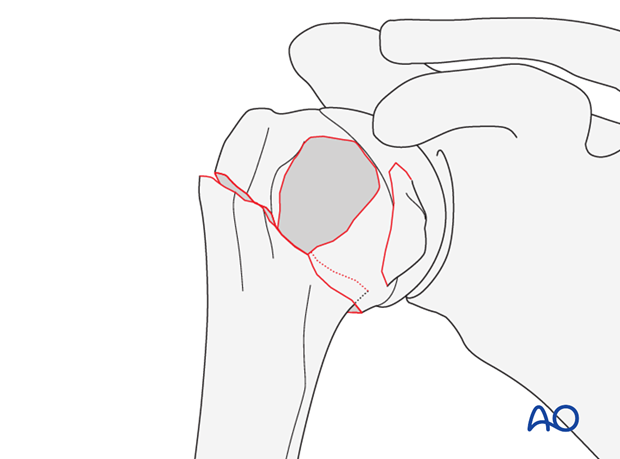Extraarticular 3-part, surgical neck and lesser tuberosity, impaction
General considerations
These fractures are bifocal fractures, involving the surgical neck and the lesser tuberosity. Neither fracture line involves the articular surface, and there is impaction of the metaphyseal (surgical neck) component.
The subgroups are distinguished by metaphyseal angulation.
Since the metaphyseal impacted fracture component is usually quite stable, the indication for surgery depends on the displacement of the tuberosity. If there is a severe displacement of the humeral head a reduction should be considered especially in the young.
Medial impaction of surgical neck and involvement of lesser tuberosity
In this subgroup, the fracture of the metaphysis is impacted medially and involves a fracture of the lesser tuberosity. These fractures appear as varus impacted 3-part fractures. Due to the direction of the lateral impaction they can be divided in a pure lateral impaction, a posterolateral impaction, and an anterolateral impaction.
Since the periosteum is typically not ruptured, they tend to be quite stable.
Be aware that there may be a pre-existing rupture of the supra-/infraspinatus tendon, especially, if there is no severe rotational component of the humeral head.














